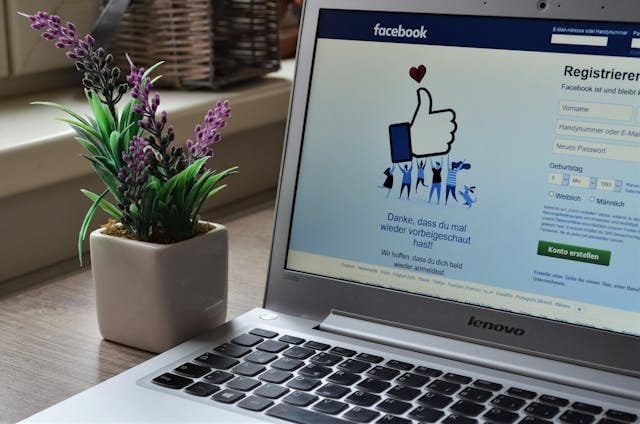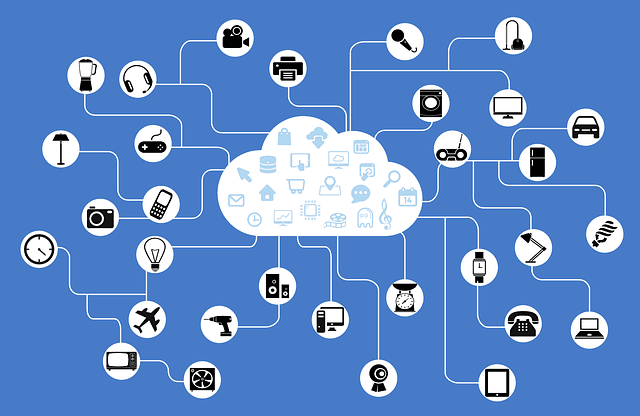Understanding Customer Experience Trends
Importance of Customer Experience
Alright folks, let’s get this straight. Customer experience (CX) ain’t just some fancy buzzword—it matters more than ever now. And lemme tell you, it’s like the secret sauce that can make or break a brand. These days, how your favorite coffee shop treats you is way more crucial than how much that latte sets you back. Research shows that about 73% of folks out there make their buying decisions based a whole lot more on their experience with a brand. I mean, Walker Info’s got the scoop, right? What does this mean? Businesses need to make sure every interaction along that customer journey is as pleasant as a walk in the park on a sunny day.
When I obsess over offering top-notch customer experience, I’m not just seeing bigger spends per person—I’m talking about mega boosts in customer happiness and loyalty. It’s like giving a pep talk to every single team in your biz. You get everyone jazzed about sharing good vibes and making sure that the customer experience journey is all sunshine and rainbows.
| Key Metrics | Importance |
|---|---|
| Customer Experience | Beats price or product in importance |
| Consumer Reliance on Experience | 73% base buys on experience |
| Employee Engagement | Boosted by happy customers |
Evolution of Customer Expectations
Man, how things have changed! Today, people want it all—tailor-made, super smooth, and fast experiences at every turn. They’re expecting brands to read their minds almost, to get their preferences right off the bat. It’s like the wild west of customer demands, and companies have to up their game in customer experience management.
People can tap into all sorts of info with a click nowadays, so they’re savvy and picky, comparing brands based on the whole enchilada—experience, not just the price tag. Businesses, take note: It’s time to jazz up your customer experience strategy to keep up with these expectations.
Mix tech-savvy moves with real-deal empathy in your customer chats. It’s easy to fall into the trap of sounding like a robot with those automated customer service replies. Experts at Harvard Business Review have some wisdom here: keep it real, or risk pesky “engineered insincerity.” So, we gotta balance it out—automation that ups the CX game, not drags it down.
Roll with these changes, and not only will you score loyalty points, but you’ll also carve out long-lasting bonds with your customers. Want to dig deeper on how to track all this? Check out some customer experience metrics. They’ll keep you on your toes.
Balancing Technology and Empathy
These days, it’s a wild ride out there in the market, and I’ve learned that weaving technology into how we treat our customers is a must. But here’s the kicker—keeping empathy front and center is the real trick. If we don’t handle this balance right, we might end up with what some folks call “engineered insincerity,” where all those fancy automations come off as fake and miss the real needs of our customers.
Avoiding Engineered Insincerity
So, what’s this engineered insincerity thing? Well, you know those pesky emails you get that have nothing to do with your life, or those chatbots that try too hard to buddy up with you, but only end up annoying the heck out of you? Yeah, that’s what we’re talking about. It’s when tech gets pushy and makes things feel disconnected. Customers start rolling their eyes instead of having those “a-ha” moments we crave.
Take, for example, those relentless text messages that feel like a daily ambush. To fix this, my approach is to harness automation that adds to the human touch—not substitutes it. By diving deep into data and using customer journey mapping, I make sure communications hit the sweet spot and genuinely mean something to folks on the receiving end.
Impact of Automation on CX
Let’s chat about automation and how it shakes up the customer experience (CX) dance floor. It’s like having a secret weapon in your back pocket, but you’ve got to use it wisely. Lately, companies have found themselves scrambling to keep up with what customers want, thanks in part to supply chain hiccups and changing channels Harvard Business Review. Automation helps by tidying up processes, giving speedy responses, and lightening loads. But we’ve got to tread carefully—people don’t want to feel like they’re dealing with robots.
There’s some solid proof that happy customers are gold—those nailing customer satisfaction see a pop of about 20% in satisfaction rates and a nice bump of 10 to 15 percent in sales conversions McKinsey. By slipping automation naturally into the customer experience, efficiency goes up without steamrolling the personal touch that folks love.
So, at the end of the day, it’s all about riding the tech wave while keeping the heart in the picture. Finding that groove means stronger customer connections, more folks sticking around, and word-of-mouth praise that forms the bedrock of any rocking customer experience strategy.
Customer Experience Measurement Strategies
Getting to grips with how customers really feel is like the golden ticket to keeping them around and smiling. When I tune into what they think, it gives me the chance to switch things up and make sure I’m on the right track. Here’s the lowdown on three popular methods for sizing up customer vibes: Net Promoter Score (NPS), Customer Satisfaction Score (CSAT), and Customer Effort Score (CES).
Net Promoter Score (NPS)
NPS is the trusty yardstick for figuring out whether my customers would give me a thumbs up or not. It splits folks into fans, fence-sitters, and those who’d rather skip me. Getting a grip on these groups helps me gauge the mood towards my brand and see where I need to step up my game. The formula looks daunting, but it’s pretty simple:
[ \text{NPS} = \%\text{Promoters} – \%\text{Detractors} ]
| NPS Score | Category | Definition |
|---|---|---|
| 0-30 | Low | Needs work |
| 31-70 | Moderate | Doing okay |
| 71-100 | High | Rocking it |
Curious about weaving NPS into my tactics? Hit up customer experience measurement.
Customer Satisfaction Score (CSAT)
CSAT’s the go-to for checking whether my customers are leaving with a smile or a scowl. It’s a straightforward 1 to 5 rating deal, where they tell me how they feel post-purchase. The CSAT score gets crunched like this:
[ \text{CSAT} = \left(\frac{\text{Total Satisfied Customers}}{\text{Total Surveyed Customers}}\right) \times 100 ]
| CSAT Score | Satisfaction Level |
|---|---|
| 0-60 | Not Happy |
| 61-80 | Meh |
| 81-100 | All Good |
With CSAT, I can tweak my customer experience strategy to make sure my customers are getting what they want. For more on nailing CSAT, mosey on over to customer experience metrics.
Customer Effort Score (CES)
CES zooms in on how easy or complicated I’m making life for my customers—basically, the fuss factor. A popular question goes something like, “How easy was it to get what you were after?”
CES goes from 1 to 7, where lower means less hassle for them. Here’s how it’s tallied:
[ \text{CES} = \left(\frac{\text{Sum of Effort Scores}}{\text{Number of Responses}}\right) ]
| CES Score | Effort Level |
|---|---|
| 1-3 | Piece of Cake |
| 4-5 | Bit of a Chore |
| 6-7 | Gah! |
CES can spotlight where I’m throwing hurdles in my customer experience touchpoints, so I can smooth things out and make everyone’s day better. For a deep dive on CES, check out customer experience solutions.
When I line up NPS, CSAT, and CES, it’s like having a full-on map of how folks are feeling about my business. With these insights, I can make real, positive changes that boost my customers’ experience.
Linking Customer Experience to Business Outcomes
Digging into how customer experience (CX) ties to the nuts and bolts of business success is crucial for anyone who’s hoping to stick around for a while. Let’s talk about Customer Lifetime Value (CLV) and how pouring some love into CX can fill up those bank accounts.
Customer Lifetime Value (CLV)
Picture Customer Lifetime Value (CLV) as a big ol’ calculator that figures out how much moolah a customer drops over the time they’re with you. It’s not just what you shell out to snag a customer, but what they bring back over the long haul. Happy customers tend to stick around and keep spending, which cranks up their CLV. Some fancy studies say that CLV, tied with numbers like Net Promoter Score (NPS), Customer Satisfaction Score (CSAT), and Customer Effort Score (CES), shows how spiffing up CX affects business (Genroe).
Let’s break this down for ya:
| Customer Group | How Often They Buy | What They Spend | How Long They Stick Around (Years) | CLV ($) |
|---|---|---|---|---|
| Group A | 4 times a year | 50 | 5 | 1,000 |
| Group B | 2 times a year | 100 | 3 | 600 |
| Group C | Once a year | 200 | 10 | 2,000 |
From these numbers, you can see that making customers happy can fatten up that lifetime value. Not too shabby, huh?
Connecting CX Efforts to Financial Results
Making customers smile isn’t just for the warm fuzzies; it’s about boosting those dollar signs. Companies with their CX game on point often see their financials dance a happy jig. Like, if you’re in the grocery business and all about personal touches, you might see your sales take a little hop, skip, and jump upwards by about 1% to 2%. It’s even more in other fields where loyal customers keep bringing that sweet green (McKinsey).
Throwing tech like AI and Business Process Automation (BPA) into the mix can smooth out those awkward customer hiccups, making them (and the accountants) smile (Grassroots IT).
Here’s how savvy CX bumps up sales and shaves off costs:
| CX Trick | Sales Boost | Saves You In Costs |
|---|---|---|
| Tailored Marketing | 1% – 2% | 10% – 20% |
| AI Magic | 5% – 15% | 10% – 30% |
Plopping money into CX isn’t just for kicks—it can really line up with your big picture goals, boosting satisfaction and that all-important bottom line. For more cool stuff on sprucing up customer vibes, check out customer experience management or customer experience analytics. Happy exploring!
Enhancing Employee Experience for Improved CX
If you want happy customers, it all starts with happy employees. Employee experience (EX) isn’t just about a nice office or cool perks; it’s about making sure folks at work feel motivated and appreciated. Let’s see how this can make your business shine.
Importance of Positive EX
Making sure employees enjoy their work has become a real game-changer, especially with everyone competing for top talent. By 2025, our work environments and what folks expect from their jobs are set to change drastically (Renascence). If employees feel appreciated and are actively engaged in their jobs, they’re more likely to create a vibrant work vibe, which trickles down to how they treat customers.
Happy employees aren’t just smiling more at work. They are the powerhouse behind happy customers. When employees are satisfied, they work harder to keep customers happy, creating a feel-good loop where everyone wins. Businesses that care for their employees see staff sticking around longer, which boosts their ability to deliver great customer service.
Impact on Customer Interactions
You really can’t overlook how much worker vibes affect customer service. Passionate and committed employees go above and beyond, offering customers those ‘wow’ moments. Take a page from The Ritz-Carlton’s book; they’ve nailed the art of customer satisfaction by training their staff to provide out-of-this-world service, scoring an impressive 81% in guest loyalty in reviews (Omniconvert).
When employees are happy, teamwork feels less like work and more like a dream team scenario, leading to quicker and better solutions for customer issues. They often take on roles as brand ambassadors and turn pleased customers into full-on fans (Walker Info). An employee who feels passionate about the company will go that extra mile, making the customer’s experience amazingly memorable.
At the end of the day, focusing on EX means more than just looking inward; it’s about harnessing the gusto of a motivated team to fuel customer satisfaction and drive business success. As I keep digging into customer experience trends, it’s super clear that there’s a strong bond between happy workers and happy customers.
Personalization in Customer Experience
Importance of Personalized Experiences
Personalization ain’t a trendy buzzword anymore; it’s like delivering your grandma’s pie, made just for you. Listen, 80% of consumers these days crave a made-for-them shopping experience, and why not? When you’ve got big players like Amazon leading the parade, the rest of us can’t just sit on our hands, McKinsey. And let’s be real, if I want my customers to keep coming back, feeling special, and for my brand to stay ahead, jumping on this personalization train is a must, not a maybe.
Benefits of Personalization in Retail
What’s in it for us, you ask? Well, conjure up visions of increased sales; even a measly 1-2% uptick can mean a whole lot, particularly in grocery stores, but hey, other retailers might see even bigger dollars McKinsey. By tuning into each shopper’s unique vibes, stores can build customer loyalty that’d make a golden retriever look aloof—and rake in a heftier chunk of their spending too.
Moreover, imagine trimming down marketing costs by up to 20%. Yes, personalization can do that. Tech-savvy giants like Nike know the game; they offer individual style choices and exclusive NikePlus perks McKinsey, showing how these tactics can retain customers across every shopping channel.
In the end, it ain’t just about keeping up with the Joneses; it’s about making the experience as memorable as a family road trip (without the bickering). Personalized experiences not only rise to meet customer demands but also boost the bottom line and efficiency. For more golden nuggets on this, check out customer experience management.
Making Tech Your Friend for Better Customer Experience
Keeping up with customer experience trends is like trying to keep your dad off TikTok—you’re never quite sure how it’ll pan out, but it’s bound to be interesting. I truly believe gobbling up some Artificial Intelligence (AI) and Business Process Automation (BPA) can really turn the tables in how businesses chat with their peeps.
How AI Is Shaking Things Up
AI is like that annoying-but-super-smart cousin who knows everybody’s secrets. It helps businesses churn out messages that don’t just say “Hi, valued customer!” but instead, actually sound like they know who is on the other side. That’s some nifty stuff right there. AI does this with:
| AI Wizards | Magic Tricks |
|---|---|
| Custom Chat | Talks like it read your diary—personalizes all communications |
| Lightning Decisions | Answers faster than you can say “customer support” |
| Crystal Ball Stats | Predicts what might make you grumble or grin |
Slap this tech into your customer service and it’s like putting a jet engine in a go-kart. I reckon you should check out more on this with our customer experience metrics.
How BPA Is Your New BFF
Business Process Automation is like having a robot sidekick who doesn’t get tired or make ‘whoopsies.’ It automates the boring stuff so you can focus on keeping your customers smiling. There’s this engineering firm I read about, hooked up to Microsoft Power Platform, and their delayed projects found the fast lane—high-fives all around!
| BPA Miracles | What It Does |
|---|---|
| Smooth Operations | Zaps the grunt work so you can chill |
| Error Eraser | Keeps mistakes in check |
| Turbo Efficiency | Frees up the brainy folks for big stuff |
I don’t just think tech is a good idea—I see it as the road to reach those huge business dreams. If you’re curious how to get the ball rolling without tripping over, hit up our improving customer experience guide.
Throwing AI and BPA into my plan sorted out a crazy amount of mumbo-jumbo and made customer convos a breeze. Resting on your laurels in this hyper-customer-focused market won’t cut it, folks. Making tech your ally isn’t just smart, it’s downright necessary to keep your business buzzing and thriving.
Creating Exceptional Customer Experiences
Competitive Edge of Great CX
So here’s the buzz: Customer experience (CX) isn’t just a fancy term bigwigs throw around during meetings. It’s now the big cheese when it comes to consumers picking between brands. Forget about chasing the cheapest deal or the flashiest gadget—CX tops the list. A whopping 73% of shoppers say how they feel during and after shopping is what seals the deal for them (Walker Info).
Why such a fuss over this CX thing? Well, cracking the code on this means folks stick around longer, even digging deeper into their pockets. Companies who nail the happiness game see customer smiles soar by 20%, and their sales jump 10-15% (McKinsey). Look at Uber—people can’t help but come back for more, with 75% of users ready for another ride thanks to their slick and smooth service (Omniconvert).
| Metric | Percentage Increase |
|---|---|
| Customer Smiles | 20% |
| Sales Boomerang | 10-15% |
| Happy Employee Buzz | 20-30% |
It’s crystal clear: paying attention to CX will pay you back with interest. If I want my business to get the applause, it’s time to focus on hooking customers with every single interaction they have with me. For more on mastering the CX tango, check out the customer experience journey.
Bouncing Back from Oops Moments
Every business has its oops moments. What separates the champions from the chumps is how they bounce back. Picture this—something’s gone wrong. What’s my move? First off, admit the screw-up. Nobody likes a cover-up. Apologize like I mean it and fix what’s broken. Done right, this can be turned around, forging stronger ties with the customers.
Interestingly enough, people actually walk away more satisfied from a well-handled mishap than from a completely smooth ride. Go figure! But it makes sense because everyone loves a good comeback story.
Here’s my playbook for mending fences:
- Hear ‘em Out: Let the customers speak their minds, and let them know I’m listening.
- A Little Sweetener: Throw in a discount or a perk for next time—it’s like a peace offering.
- Stay in Touch: Drop a line after things are sorted to check if they’re smiling again.
Dive deeper into crafting a bulletproof customer path at customer experience mapping and customer experience touchpoints. Address the hiccups and watch as my brand not only powers through complaints but turns them into stepping stones.




















